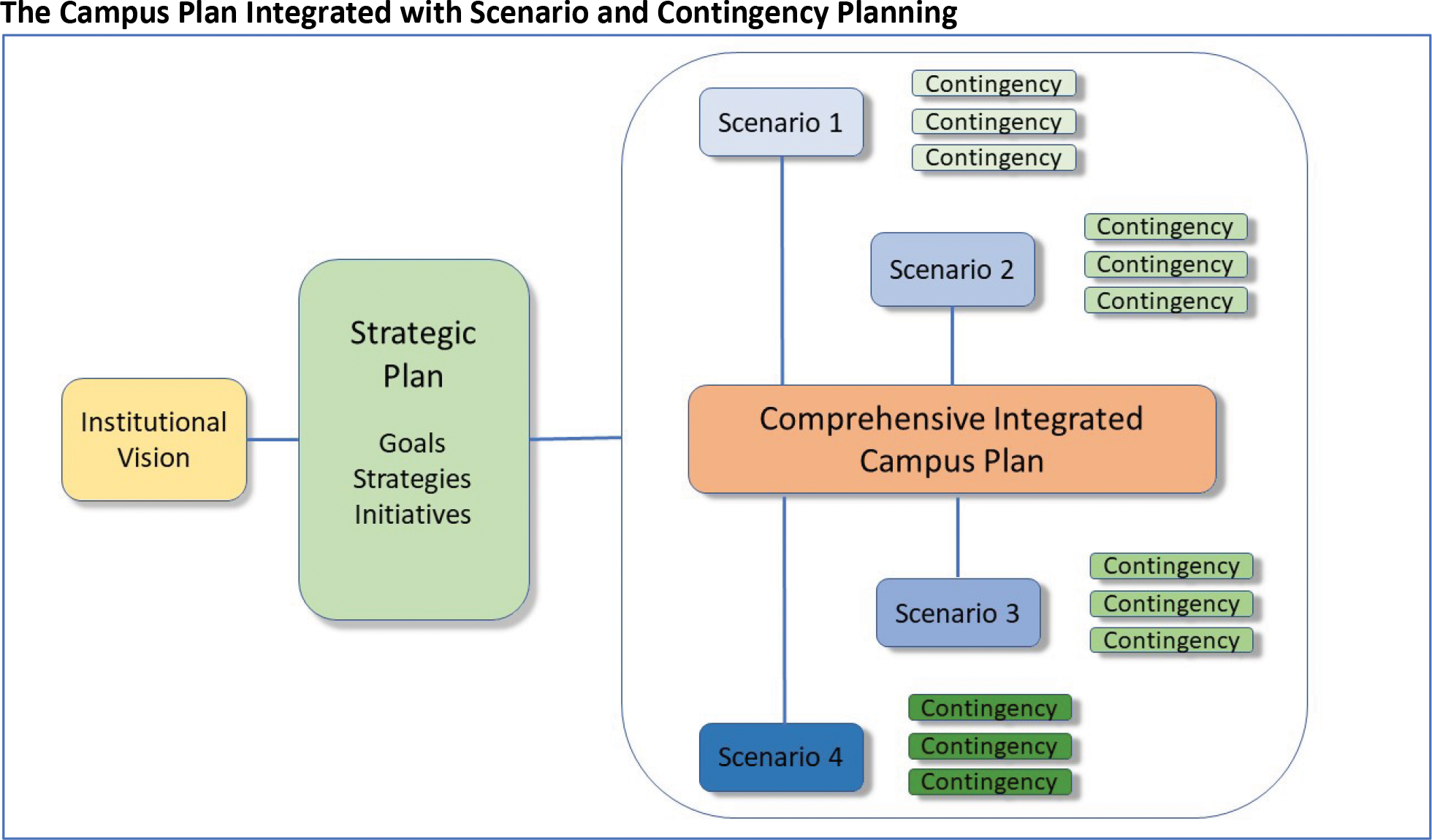| |
|

Fifteen years ago, I wrote an article for Perspective on Campus Planning about the death of the campus master plan. I was decrying the use of the term “master”, which in my mind, had lost its meaning in planning. The real directing plan is the institution’s vision and strategic plan, which should drive all other planning – academic, financial, and physical.
“At one time, the term “Master Plan” had a meaning that all who used it
seemed to understand. Today, it has lost that meaning: it seems as
if any planning or design is a “Master Plan.”
It reminds me of the word “love” which used to have a
specific meaning and now is used casually to mean anything from copulation,
to affection,
to like, to zero in tennis.
Architects are notorious for using the term “master” for almost any
project – almost all plans, or rather designs, are “master plans.” In addition to campus master plans, I have seen master plans for a section of a campus, and master plans for individual buildings. I have seen master plans for windows and master plans for toilets. What does the word “master” mean in any of these contexts? Whatever you wish – and therefore it means little – and, in fact, the use of the term adds a level of implied importance and thoroughness that is misleading. Potentially, institutions are making
multimillion-dollar decisions based on incomplete information and information that is out of context with the broad picture.”
Given our current focus on eliminating racist imagery and words as a small but necessary step to improving civil society, it’s probably past time to replace the term “master plan” with “campus plan”, a more accurate and descriptive term in any case. What I would really like to do is suggest a reconceptualization of the campus plan itself. Essentially the typical campus plan shows an ideal view of what the campus might look like in the future. It is an imagined view that assumes a specific future. Theoretically, the plan should be based on the college or university’s vision of what it intends to become, and based as well on the strategic plan that articulates the goals, strategies, and tasks to attain that vision.
When a college or university describes a vision of itself – which is fundamental to the formulation of a strategic plan – the institution is describing its future – such as “within ten years, this university will be among the top twenty public research universities in the US News ranking.” The campus plan shows the implication of that vision – that projection of the future.
There is always uncertainty in planning, but the conventional campus plan assumes some of that uncertainty but still projects a single future. What if that uncertainty is significant and dramatic? A pandemic, an environmental crisis (earthquake, fire, flood, tornado), a significant decrease in high school graduates, an exciting and bold new technology, or a dramatic decrease in state funding?
The single drawing and documentation that shows what the campus is going to look like in ten, fifteen, or twenty years is a prediction of a future. Can anyone really do that? After the chaotic way that many colleges and universities reacted to COVID-19, better planning is essential. I don’t believe that the single view of a future, the campus plan, is going to be as useful as a plan that also integrates scenario and contingency planning.
Scenario and contingency are two different but related types of planning that emerged out of military planning in the 1950’s and further developed by business and corporations soon thereafter. Scenario planning is a methodology that describes other possible futures and identifies the underlying forces that shape each scenario. Contingency planning focuses on addressing the various options if a specific scenario becomes a reality.
An important aspect of scenario planning is the identification of early warning triggers which can alert an institution that the scenario is going to occur and that the planned contingencies will need to become operational.

There are various documents and articles online and off that describe the scenario and contingency planning process. One key for success is the executive leadership’s acceptance of the importance of including these two planning activities in the campus plan process. Their support and participation in the development of scenarios is crucial.
Another key for success is the diverse group of faculty, staff, administrators, students, and off-campus partners that are chosen to create the various scenarios. All voices and ideas should be heard and evaluated. No one should dominate the discussions.
For most colleges and universities, a pandemic should have been a scenario that could become a reality. In 2005, there was a dangerous epidemic called the Bird flu. It spread in China, Asia, Africa, Europe, and the Middle East. Although the number of human cases were small, over 50% of those cases were fatal. Scientists were afraid of a pandemic, but then the cases declined and faced away. It is still unclear why. Another pandemic should have been expected at some time – 2020 was the time.
In the meantime, stay safe.

Arthur Lidsky

|
|
|



